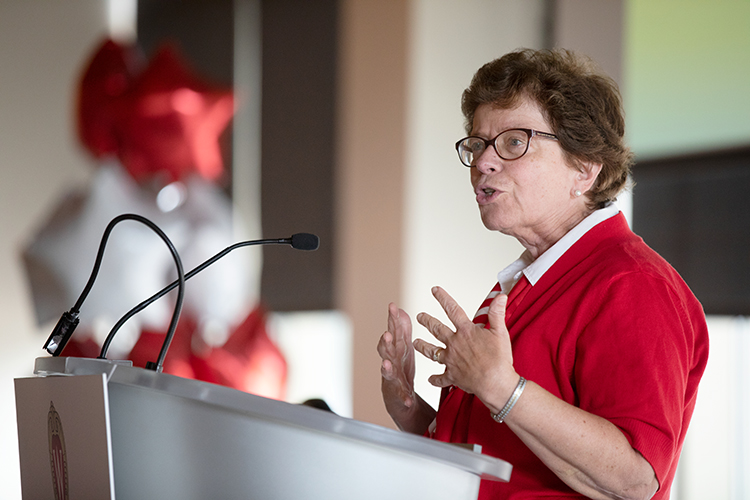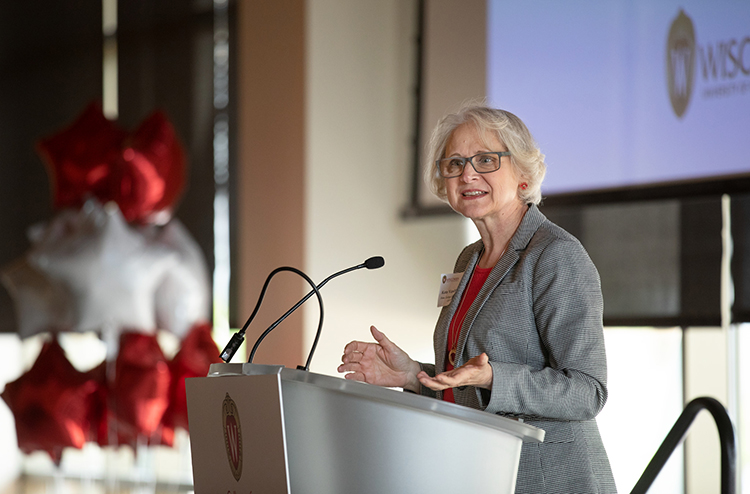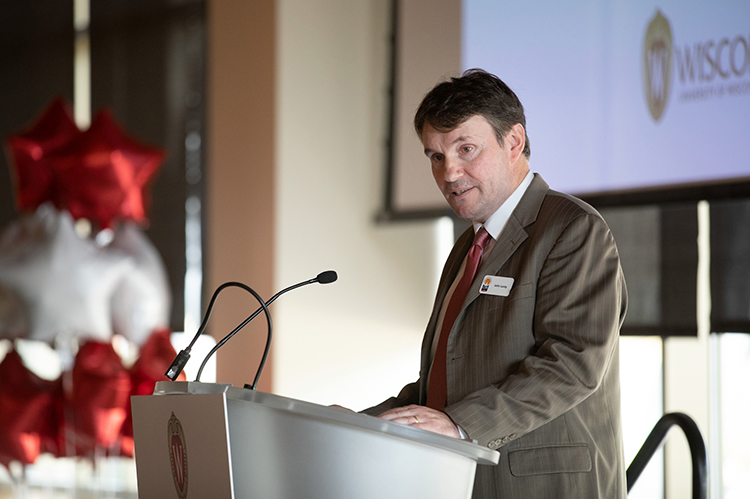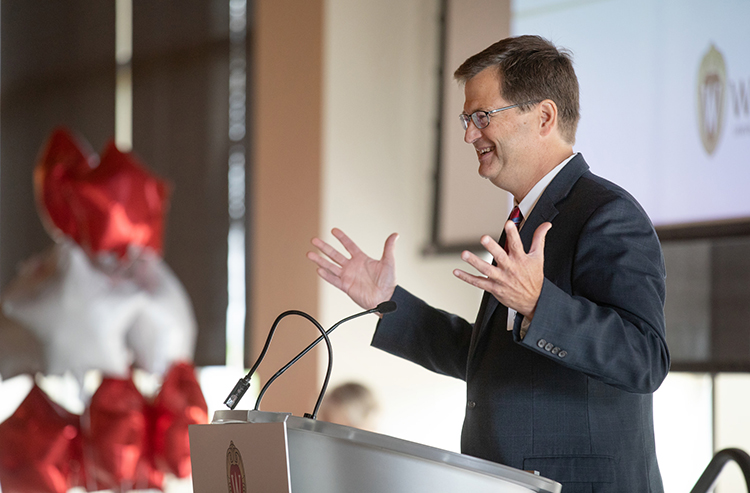
Named after legendary dairy-industry icon Stephen Babcock . . . Babcock Hall, which facilitates some of the world’s most cutting-edge dairy product research, will be reborn. Not only will Babcock Hall receive a full renovation, the Center for Dairy Research (CDR) will obtain modern dairy plant manufacturing and processing facilities in the process. It’s CDR that co-administers the Wisconsin Master Cheesemaker Program.
Of course, Stephen Babcock is not only a dairy pioneer in Wisconsin, but throughout the dairy world. After all, it was his famed Babcock test that standardized milk testing and milk pricing. Babcock, who left his Cornell research position in the late 1880s, came to Wisconsin and helped birth the idea of America’s Dairyland with Governor W.D. Hoard.
Like that duo’s innovative work over a century ago, this $47 million investment into dairy product research stands to transform dairy product innovation for generations to come. The joint facility housing the University of Wisconsin-Madison’s Food Science Department and CDR is slated to open in 2020.
On September 7, the collective dairy industry came together to celebrate this new dawn for Babcock Hall in a groundbreaking ceremony.
A grand partnership
“The Center for Dairy Research (CDR) and Babcock Hall project is unique for a few reasons,” shared University of Wisconsin Chancellor Rebecca Blank. “What’s unique about this project, first, I’d say it’s been too long, six years in the planning. That’s long, even by Wisconsin state standards. But our patience has paid off,” she said.
“The facility is going to be one of the premier dairy research and education centers in the nation. And most importantly, it’s going to be a hub for discovery and innovation for Wisconsin’s dairy industry . . . working closely with our faculty and our students.
“The second reason the project is unusual is that it’s the result of one of the largest partnerships we’ve ever created for putting a building together,” said the leader of Wisconsin’s flagship campus. “Nearly 200 individuals and organizations gave $16 million in just eight months to make this dream a reality.”
Eventually, an additional $2 million was donated by industry partners to bring the total to $18 million.

“This is a great example of a public-private partnership that has worked in the past, and I hope will work in the future,” said Keith Ripp, assistant deputy secretary of the Department of Agriculture, Trade and Consumer Protection. “This will certainly ensure that the University of Wisconsin-Madison will have a world-class dairy research facility for years to come,” said Ripp, who also is a dairy farmer. He added this project had a high level of importance to Wisconsin.
“When the Governor’s Dairy Taskforce met earlier this month, the importance of technology and research was certainly at the forefront,” said the ag leader of Governor Scott Walker’s most recent dairy initiative.

“There are so many people who have worked so hard to bring this project to reality,” noted Kate VandenBosch, who is dean of the College of Agriculture and Life Sciences at the University of Wisconsin-Madison. With that, she recognized the donors who collectively gave one of the largest gifts to the college.
Cheese and innovation in the forefront
“This new facility provides pilot plant spaces and the new equipment necessary for us to reach this goal of a top-class research and training program,” said John Lucey, director of the CDR. “I am delighted that the dairy industry had substantial input into the design of the facility.

“In terms of program areas that will be new in our building . . . I am very proud to recognize a couple of key areas,” said the dairy specialist who previously studied in Ireland and New Zealand. “Specialty cheese is a big thing here in the state of Wisconsin, and we will have nine individual ripening rooms that will allow us to make any cheese that the industry wants to do or we want to research on.
“This is a big deal,” reinforced Lucey. “We never had any specialty ripening rooms previously.
“We also will have very different styles and types of new cheese vats that will help us train the cheesemakers,” said Lucey. “This will also help us develop new award-winning products for the future.
“We also will install a new spray dryer to help produce new types of ingredients and maximize the value of dairy co-products,” he said to the audience of donors and industry shareholders. “So, across the entire dairy spectrum, we see a lot of new opportunities.”
A long time coming
“I recently moved offices, and in the process of cleaning out old files, I found a flyer for the renovated Babcock Hall . . . that was in 1951,” said Scott Rankin, chair of the Department of Food Science in comments that drew laughter from the audience.

“The construction process actually began at a department committee meeting nearly a decade ago,” said Rankin in a more serious tone. “Frustrated with the scope of renovations, my then department colleague, Dr. Rusty Bishop, now with Schreiber Foods, stated something that I imagine was on all of our minds, ‘We need a new facility!’
“With that statement, coupled with the growing programs of the Center for Dairy Research, we began to craft and design a campaign that has finally . . . finally . . . come to this groundbreaking event,” added Rankin.
Finally has meaning
“We did it!” exclaimed John Umhoefer, executive director of the Wisconsin Cheese Makers Association. It was Umhoefer who helped drive the private donations.

“When this opens in 2020, as you said Scott (Rankin), we will celebrate a decade that started with inspiration, moved to your generosity, paused with perspiration, and ended with cooperation,” he said. That perspiration that Umhoefer spoke of involved snags and intense discussions on how to balance the needs of industry and the university — Food Science and CDR.
“For those of you who work every day to make this university better . . . and you have a sense of the agricultural industry . . . for us, this is big news. This is the biggest news that could be happening in Wisconsin right now,” Umhoefer pointed out. “We churn $43 billion of economic activity in this state in the dairy industry. Now we have a new focal point for our future,” he said, giving a nod to the dire economic conditions faced by the dairy sector.
When the Babcock Hall project is completed, it will rank among the world’s very best dairy product research and innovation centers.








